Travel Date: 2023/07/08
Driving here last time, we had to head back home after arriving in Beipu due to rainy weather.
This weekend, we decided to wake up a bit earlier and visit Chang Xueliang's Former Residence in the mountains of Wufeng Township, Hsinchu. We took the road that goes through Beipu Town and continued further into the Hsinchu Mountains, passing Shannping Old Street and several aboriginal villages. Along the road, there are many markings written in their own languages, adding to the cultural richness of the area.
Our destination was the Aboriginal Village - Qingquan Tribe in Wufeng Township. Although it's less than 50km away, it took us about 1.5 hours to drive from our home. The mountain road can be quite narrow at times, making it challenging to navigate when encountering oncoming traffic. While driving a scooter may seem easier, it can also be more dangerous due to the presence of cliffs and frequent warnings about falling stones. However, seeing several other cars driving to and from the Japanese house reassured us that it was possible to reach the destination by car.
Upon arrival, we discovered that, like many other places we visited in Taiwan, access to this spot was free of charge. The car parking area is located on the road before crossing the bridge. It's advisable not to park along the road near Chang Xueliang's Former Residence as it's a red zone, and the police frequently come to check. Adjacent to the building, there is a small public hot spring park, which we didn't have a chance to visit due to the scorching weather. The temperature was around 34 degrees Celsius, but it felt even hotter, like 40 degrees Celsius, especially around noon.
See also: Beipu Old Street
Zhang Xueliang's Former Residence (張學良故居)
Zhang Xueliang's Former Residence is a museum dedicated to his life in Wufeng Township, Hsinchu County.
Zhang Xueliang played a significant role in the reunification of China in 1928 following the conclusion of the Northern Expedition led by Chiang Kai-shek's National Revolutionary Army. The expedition aimed to unite the Beiyang Government under the Republic of China. However, Chiang was unwilling to collaborate with the Communist Party of China to defend the country against the Imperial Japanese Army during the Second Sino-Japanese War. In December 1936, during the Xi'an Incident, Zhang took Chiang hostage and demanded an end to the civil war with the Communist Party and cooperation in the fight against the Japanese.
After Taiwan was handed over from Japan in 1945, Chiang imprisoned Chang for his involvement in the Xi'an Incident and placed him under house arrest in Wufeng Township, Hsinchu County from 1946 to 1957. Zhang left Taiwan in 1993 to visit his relatives in the United States. In 1995, he and his wife settled in Hawaii, where he passed away on October 14, 2001, at the age of 100.
The house where Zhang was held under house arrest was damaged by a landslide in 1963. New building was reconstructed in the southwest of the original site.
In July 2008, the broken building underwent renovation to restore it and was opened to the public on December 12, 2008, during the 72nd anniversary of the Xi'an Inciden. The opening ceremony was attended by President Ma Ying-jeou. The house was later closed for further renovation and reopened on September 20, 2014.
The house covers an area of approximately 150 m2. It's adorned with Zhang's original furniture and over 500 pictures donated by his two nieces. A bronze statue of Zhang and his wife is displayed in front of the historical house.
The reconstructed former residence of Zhang Xueliang features a Japanese-style black-tiled farmhouse with a simple design that harmonizes well with the surrounding mountain scenery. The exhibition showcases various historical materials, including videos, old photos, maps, and documents, along with household items, pictures, and wall explanations, providing a vivid depiction of Zhang Xueliang's personal character and the living conditions of that era.
The building on the opposite side of the river serves as an Aboriginal museum.
Fun in the water
After exploring the site, we decided to play in the river.
If you park in the car parking area, you'll find a large information board and a sign indicating that swimming is not allowed. In the bushes nearby, there is a small path that leads to the river. Some parts of the river can be dangerous with fast-flowing water. Just a few meters away, the water is calmer and small pools are formed with stones.
When we arrived, we saw aborigines playing in the river. It was noticeable that they often have BBQs there, but unfortunately, they don't clean up after themselves. After a couple of minutes, they left, and we had the river to ourselves for a while. As the afternoon went on, more people arrived at the river, bringing kids to play here. Many people also camp in the car parking area, although it's technically illegal. Nonetheless, it seemed like a smart move as the car parking area is shaded with trees and provides a comfortable place to stay.
Aboriginal Museum of Wufeng Township (五峰鄉原住民族館)
Finding food was not a problem as there were several food stalls in the nearby aboriginal market. We could either walk or drive and park in the car parking area right next to it, which is what we did. Since there weren't many people when we visited, it was easy to find parking space. The market sells fruits, aboriginal ingredients such as millet wine or magao (mountain pepper), and various cooked foods like fried rice, fried noodles, Hakka noodles, and stir-fried vegetables. Considering it's a mountainous area far from the city, the prices seemed reasonable. Our food cost around 160NT.
A few kilometers away, there is also a 7-11 convenience store and a gas station.
The Museum of Aboriginal Peoples in Wufeng Township, formerly known as the Memorial Hall of the Former Residence of Zhang Xueliang, focuses on showcasing the culture of the Saisiyat and Atayal ethnic groups. The museum exhibits traditional costumes and everyday items of the aboriginal peoples, providing visitors with an opportunity to gain deeper insights into the lives and traditions of these two major ethnic groups residing in Wufeng Township.
Qingquan Falls (清泉瀑布)
We still wanted to see the nearby waterfall, which was only 2-3km away on the way back. We parked next to a church and asked a local person if that was the correct place. He assured us that we could follow the trail for a while, but it was impossible to get close to the waterfall anymore. We could only view it from a distance. We went to the trail entrance and found information stating that it had collapsed and was closed. So, unfortunately, we couldn't see the waterfall, but at least we had a great time playing in the river.
As it was already close to 4PM, we started our journey back home, considering it takes about 1.5 hours to drive, and the mountains get dark quickly. We noticed there were more cars on the road heading back compared to when we ventured out in the morning.
There is no need to come here as the trail to the waterfall has collapsed and it's no longer accessible.


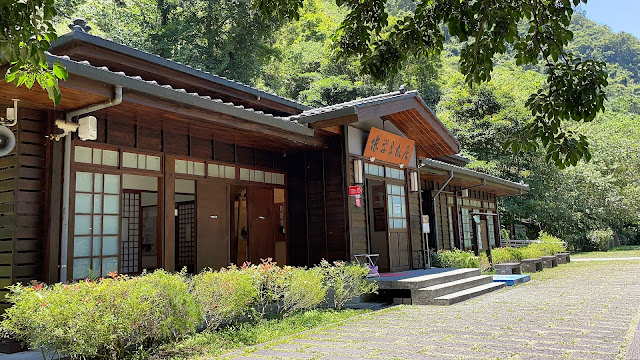



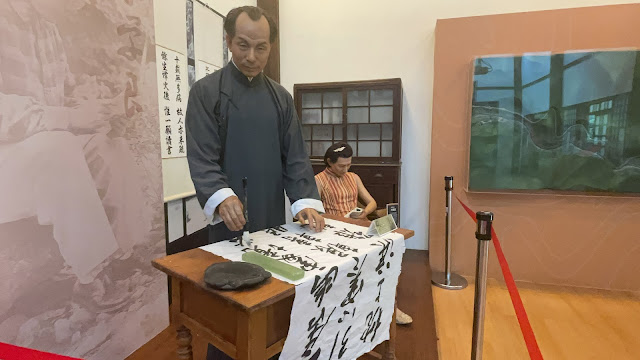





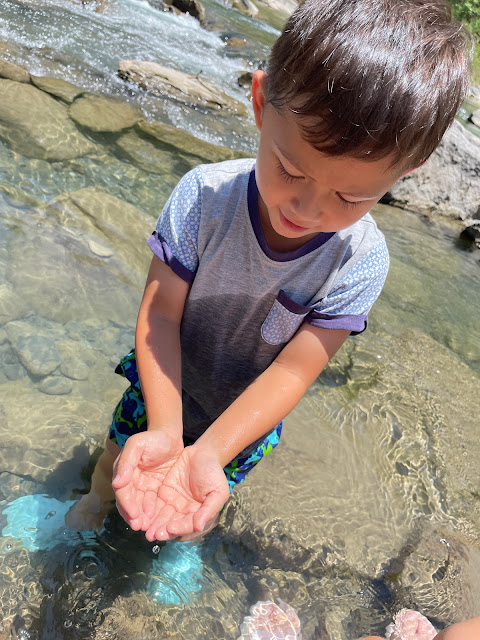
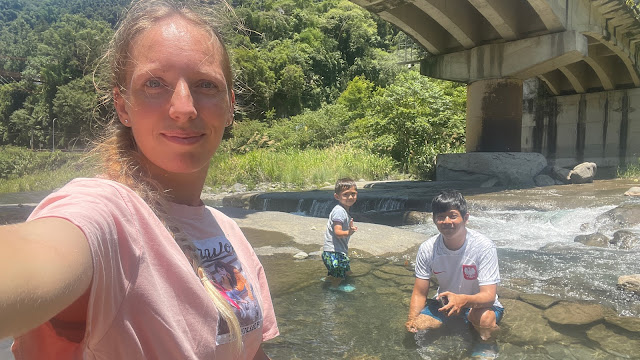


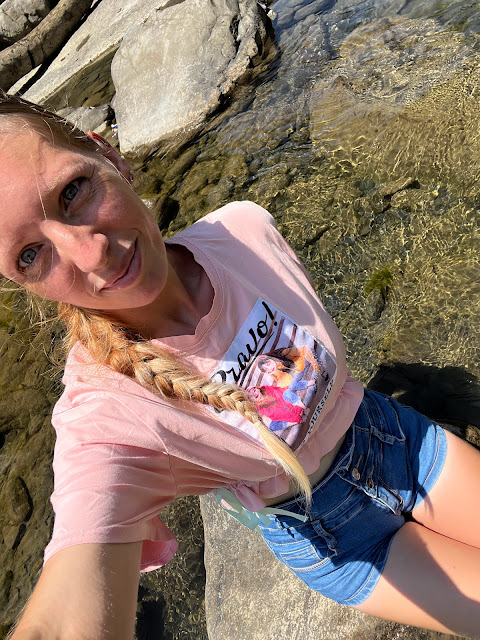

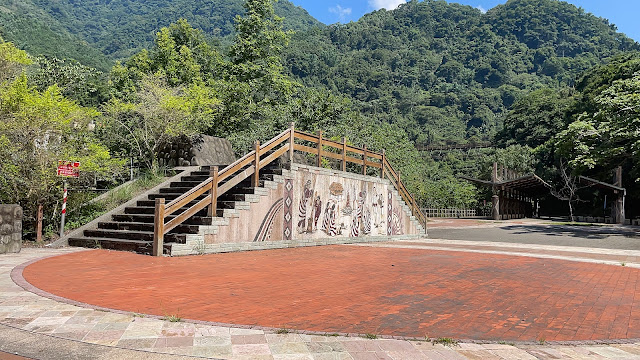

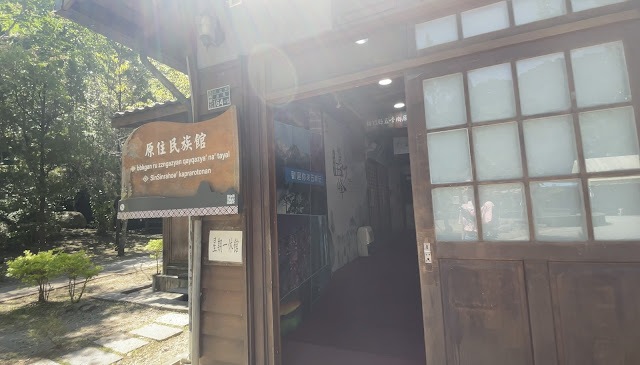














0 komentarze:
Post a Comment